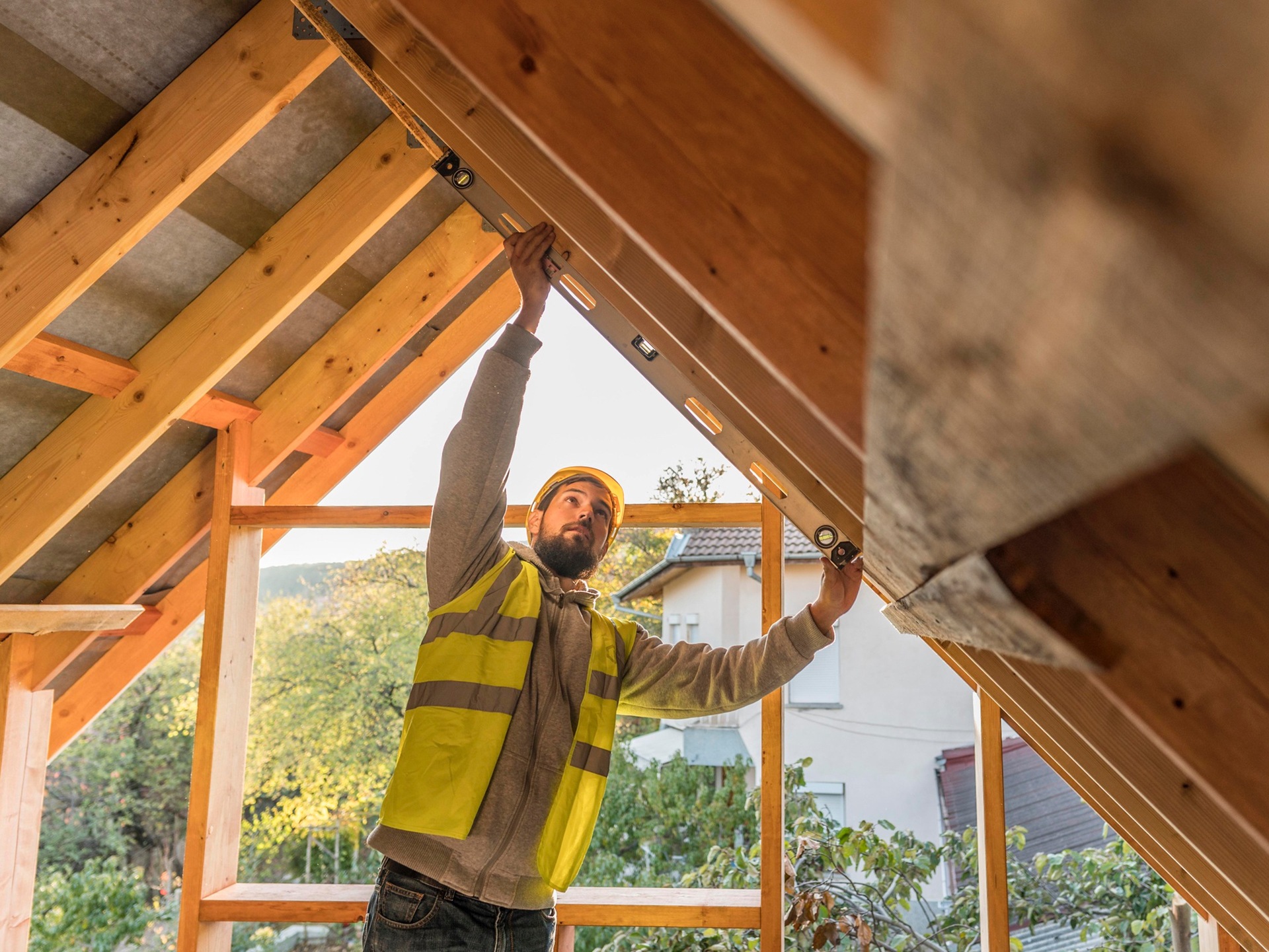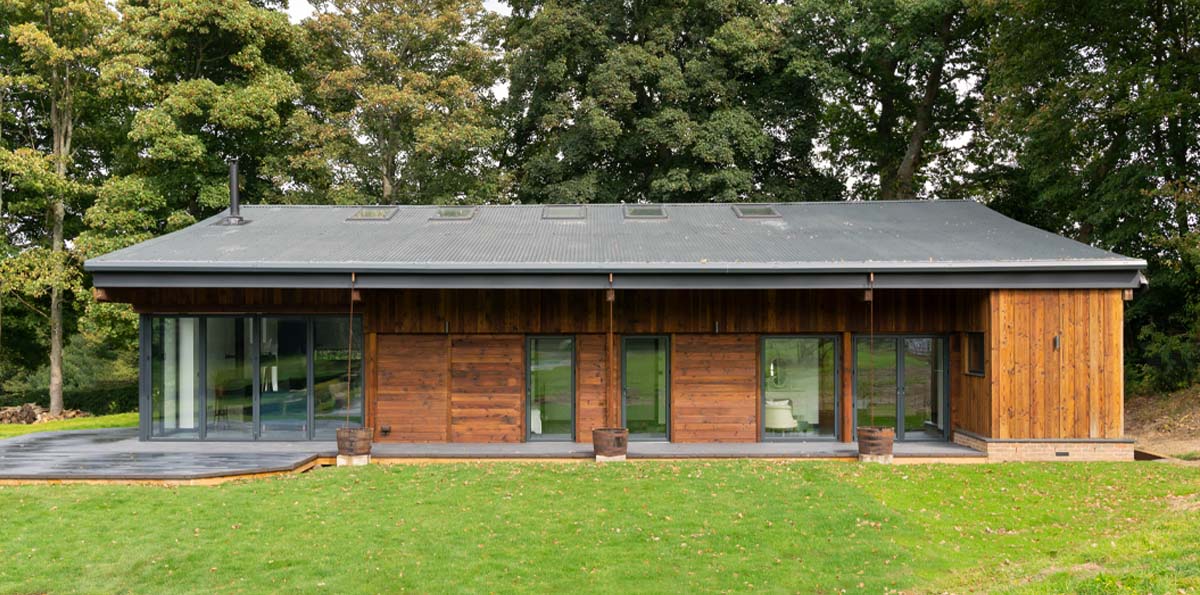Permitted development rights 2023 – everything you can (and can’t) do
Our guide to permitted development rights explains what building work you can – and can’t – do without needing to get full planning permission
Permitted development rights allow owners to make small-scale, routine alterations to their properties – loft conversions and rear extensions, for example – without having to go through the costly and time-consuming process of applying for full planning permission. In recent years the government has expanded the range of projects you can do under permitted rights. So read on to discover what’s allowed.
What’s covered?
The kinds of project covered by permitted development rules are simple, small-scale, routine works that include:
- rear extensions
- loft conversions
- dormer windows
- porches
- new outbuildings
- fences and walls
- chimneys and flues
- driveways and patios
- solar panels (other than on a front roof slope)
- replacement doors/windows
- repairs to the property
- electric vehicle charging points
- satellite dishes
The government sets out full technical guidance (rules) on permitted development rights. But these rules are complicated. Very complicated indeed.
One key thing they prescribe is the maximum size each type of development can be before planning permission will be needed. For the past few years, permitted development rights have been broadened to allow for larger extensions, as well as upwards extensions.
Prior approval
Although these these larger (and upwards) extensions don’t require planning permission, you will need to obtain something called prior approval for them. This is a less complicated business than applying for full planning permission, but you’ll need to tell your local planning authority about your plans in advance, and pay a fee. The authority then has 42 days to inform your neighbours of the plans. (It is, of course, sensible to talk to your neighbours informally, to tell them what you are looking to do before they get notice of the works from the council.)
If neither neighbours nor planners object to your plans, you will be granted prior approval to go ahead. Alternatively, you might be refused permission or given conditional approval. You have the right to appeal. The kind of factor that might have a bearing is your neighbours’ right to light.

Image Credit: Freepik
What’s allowed?
Here’s our drill down into the details of what exactly you can do under permitted development rights. We cover some of the most common projects you might want to tackle. As with all things planning-related though, it’s complicated. So always take advice on your specific project before starting work.
Single-storey rear extension
Including side-return extensions and extensions across the full width of your house. Wrap-around extensions need full planning permission.
Max depth: 3m on semi-detached, terraced and link houses; 4m on detached houses. (These measurements are from the original plan of the building or as it was on 1 July 1948 if older.)
With prior approval: 6m on semi-detached, terraced and link houses; 8m on detached houses.
Max height: 4m. But any part of the roof within 2m of your property boundaries must be a max of 3m high.
Details: Rear extensions must not extend beyond the side of the house. You can’t cover more than half the land around the original house (including outbuildings and sheds). The extension also must not come closer than 7m to the rear property boundary. Materials must be similar in appearance to the existing house.
Two-storey rear extensions
Max depth: 3m on semi-detached, terrace and link houses; 4m on detached houses.
Max height: The height of the roof ridge and eaves can’t be higher than the ridge and eaves on the original house. Any part of the roof within 2m of the property boundary must be a max of 3m high.
Max area: you can’t cover more than half the land around the original house (including outbuildings and sheds).
Details: Two-storey extensions can only be built at the back of the property, not on the side or front. Tiles and other external materials should match the existing building. The pitch of the new roof should also match the existing house. Second-storey windows must be frosted glass and their opening parts must be at least 1.7m from the floor.
Side extensions
Max width: Must not exceed half the width of the original house.
Max depth: 3m for semi-detached, terraced or link houses; 4m for detached, based on the original plans of the building.
Max height: 4m. Any part of the roof within 2m of your boundaries must be a maximum of 3m high.
Details: No restrictions on how close you can go to the boundary with your neighbours, but do talk to them about your plans first. You can’t do a full-width wrap-around extension under permitted development rights. But you can do a partial wrap-around, as long as the total width of the extension at its widest point is not more than half the width of the original building. Materials must be similar in appearance to the original house.
Loft conversions
Including, roof lights, dormers, hip-to-gable conversions, mansards, L-shaped lofts, and combinations of these. You can read more about this in our guide to loft conversions.
Max height: No higher than the existing highest point of your roof.
Max volume: Max total increase in roof volume is 50m3 for detached and semi-detached houses, and 40m3 for terraces.
Details: Under permitted development, dormers can’t be built on the front of the house. And they must be at least 20cm from the eaves. You may put Velux-style windows on the front, projecting up to 15cm from the roof surface. There must be a minimum 2m head height clearance on loft staircase. New tiles and windows must match the existing ones. New windows on the side of the house must be fitted with frosted glass, and their opening parts must be a minimum of 1.7m from the floor. Juliet balconies are allowed but not ‘real’ balconies.
Porches
Under permitted development, you can’t put an extension on the principal elevation of your house (the side of the house that faces the street) but you can add a porch.
Position: At least 2m from your property boundaries and from the road.
Max area: 3m2
Max height: 3m
Outbuildings
Structures on your property but not attached to the house, including garden rooms, garages, sheds, summer houses, swimming pools, and heating oil tanks.
Position: Outbuildings can’t be built forward of the front elevation (front wall) of the property.
Max height: 4m with a two-sided pitched roof; 3m with other types of roof. Any part of the roof within 2m of the property’s boundaries must be a max of 3m high.
Max area: Outbuildings must not exceed more than half the original footprint of the house when it was built or on 1 July 1948, if it was built before then.
Details: You may put decking around your outbuilding, but you cannot add a veranda or raised platform more than 0.3m in height.
Garage Conversions
Under permitted development, you can’t convert the garage into a separate dwelling (or annexes for family members) or increase its footprint. If you replace the garage door and install new windows, you must use similar materials to the existing house. Find out more about this in our garage conversion guide.
Extending upwards
With prior approval, permitted development rights now allow you to add a whole extra floor or two to your property, to make your house bigger or to add a separate flat, providing your house was built between 1948 and 2018! The rules here are again (surprise, surprise) complicated, but, in general:
- On a detached, multi-storey building, you can add two extra storeys on top. (An existing loft extension doesn’t count as a storey.)
- You can only add one more storey to a single-storey building like a bungalow.
- The maximum height of the final building is 18m.
- In a terrace, the extension can’t be more than 3.5m higher than the next tallest terrace.
- Windows aren’t allowed on the sides of the extension.
This is the theory. In practice, councils have not always been keen to give prior approval for these upwards builds as this useful article from Urbanist Architecture explains.
Exceptions to these rights
To make things even more complicated, there are some areas where all the permitted development rights described above don’t apply. If you live in one of the following places, known as designated areas, you will always need to apply for planning permission to do building work, regardless of the size and scope of your project. These special areas where permitted development rights don’t apply include:
- Conservation areas (confusingly, the newer permitted development right to change the use of a building – see below – does apply in conservation areas, though if you are converting a ground floor building then an impact assessment will need to be done)
- Areas of Outstanding Natural Beauty
- The Norfolk and Suffolk Broads
- National parks
- World Heritage Sites
- Sites of Special Scientific Interest
- Sites containing scheduled monuments
- Safety hazard areas
Similarly, if you live in a listed building, permitted rights don’t necessarily apply. You won’t necessarily be stopped from doing what you want to do, but a conversation with your council’s building conservation officer is a good way to start working out what could be possible.
Article 4
Councils can also apply for something called an Article 4 exemption, which, in effect, suspends permitted development rights in a particular geographic area. They may do this to try to protect the character of an area or in response to specific local concerns. So, before you do anything you need to know whether you live in an ‘Article 4 area’. If you do, you’ll have to apply for planning permission.
Further limitations
Permitted rights are further subject to a whole host of detailed limitations. Many factors affect your right to develop, including, to give just a few examples:
- The size of your planned extension in relation to the size of your plot
- Whether your property has already been extended
- Whether any previous planning permission has already been granted at your property
- Whether the property has been converted from another use
- iI your property is a flat or maisonette
- the age of your property: for example, some new properties had their permitted rights removed as a condition of being granted planning permission
The rules also say that certain kinds of extensions will always need to go to planning. For example, you will always need to get permission for an extension on the front of a house or on the side of a house if that faces a road. Like we said, it’s complicated.
Building regulations
Work done under permitted rights still needs to meet building regulations. And homeowners still need to meet their responsibilities under the Party Wall Act. Meeting building regs is about making sure any work done is safe. Meeting party-wall obligations is about giving the owners of adjoining properties notice of any works you are going to be doing that will impact shared boundaries. (The smallest projects of all (minor operations, to use the jargon) probably don’t need building regs sign off. But, if in doubt, check with your local planning authority.)
Rules for England
The permitted development rules described above apply in England. Wales, Scotland and Northern Ireland have their own similar sets of permitted development rules.
New opportunities: Change of use under permitted rights
Nowadays, permitted development rights offer a whole other set of opportunities that are worth considering if you’re interested in property development. Since 2015, additional permitted development rights have allowed for the change of use of many commercial buildings into homes, without planning permission.
The government loosened the rules in response to changing patterns in how we shop and work – and the pressing need for more homes. So you may now convert what are known as Class E premises, such as empty shops or restaurants, into residential properties, without planning permission. Class E buildings include shops (except some smaller shops in isolated areas that sell essential goods), offices, restaurants and cafés, GPs surgeries, medical centres, nurseries, sports and recreation centres. There are lots of change-of-use tables online, such as this one, that tell you which changes of use are permitted.
Again, you will need to secure prior approval, and some restrictions apply, including:
- A max floor space of 1,500m2
- The property must have been Class E for at least two years before your application
- The property must have been empty for at least three months
- It can’t be a listed building, scheduled monument, in a designated areas (although it can be within a conservation area, though special additional rules will apply)
When deciding whether to grant prior approval, the local authority will look at:
- Transport impacts of the development: for example, can it be accessed safely? Will residents have anywhere to park?
- Contamination risks in the building
- Flood risks
- How noise from nearby commercial premises might impact future occupiers of the development: for example, might incoming residents be likely to complain about established pubs or nightclubs?
- The potential impact of the loss of the services that were being offered in the premises
- Whether there will be adequate natural light in the new home(s)
- If the development is in an area with a lot of heavy industry, waste management, or storage and distribution, will these businesses be adversely affected by the arrival of new residents nearby
- The impact of the loss of a nursery or health centre.
It’s also important to remember that any external changes to the property needed to turn it into a decent home, such as adding extra windows, will still require planning permission, even if the change of use per se is covered under permitted development rights.
Get advice
So, as you can see, permitted development rights are potentially a real boon for property owners. But, even when full planning permission is not involved, navigating the many and complex rules can be tricky. If you just take a quick look at the full regulations, you can see how difficult they are for the ordinary person to understand. So you must get good advice before you start building.
Who to ask
- As the Royal Town Planning Institute has reported, local authority planning departments tend to be overwhelmed these days. However, many departments do still run informal duty-planner type services that are free or cost a nominal fee. Take advantage of these up front to get pre-planning advice from planners familiar with the rules in your local area. Go armed with as much information as you can about your property as it is and what you want to do.
- Other good people to talk to initially are the builder and architect you intend to work with. They will likely have experience with other projects and be familiar with the rules. But always bear in mind they are not planning experts and might not be aware of all the regulations, pitfalls – or opportunities.
- If you have a head for this kind of thing, you can try boning up on the subject yourself. (A good place to start is Planning Aid or The Planning Geek, which explains the rules pretty well and also offers Zoom consultations for a fee). But there are a lot of rules to get your head around.
- For a standard extension or loft conversion, you, your builder and architect will probably work it out. But if you’re contemplating a project of any size or complexity, it is probably worth talking to a planning consultant. They are experts in this complex legislation.
Lawful development certificate
Amid all this complexity, if you’re planning a unusual project, or the rules aren’t clear, one way to check that you do have the right to go ahead under permitted development rights is to apply for something called a lawful development certificate (or certificate of lawfulness) before starting work. Jason Lowes, Partner in Planning at property and planning consultants Rapleys says: “A certificate of lawfulness is a document from the local authority confirming that an application for planning permission is not needed (for proposed works), or that enforcement action cannot be taken (if the work has already taken place).
“Certificates for proposed works are not only relevant to permitted development rights, but they can be useful in that context. It might be that what you want to do to your property isn’t development (but a like-for-like repair, say), or the works might already have planning permission so another application is not needed. These are by no means obligatory – people don’t need to apply for one in advance of work taking place, but they do provide comfort just in case the works are questioned when they are taking place, or further down the line (by the Council, inquisitive neighbours or a potential purchaser). In that context, it is often sensible to obtain one.
“They are also often used to retain the ability to complete development after planning permission might otherwise have expired (the majority of planning permissions need to be implemented within three years). If pre-commencement conditions are discharged, and works started on site (which can be quite minor in scope), a certificate could then be applied for with evidence that the works have started within the permission’s three-year deadline, and the works can then theoretically be completed at any point. This can be helpful if, for example, something unexpected crops up on site which requires a pause in construction.”
More change ahead
Confused? If your head isn’t already spinning, it soon will be because Michael Gove’s Department of Levelling Up, Housing and Communities has just run a consultation on further extensions to permitted development rights. This is the speech he made about what he’s aiming to do. So, it looks like it won’t be too long before the rules change again, allowing further opportunities for extending homes and change of use without planning permission, focused on agricultural and retail buildings. So watch this space.










